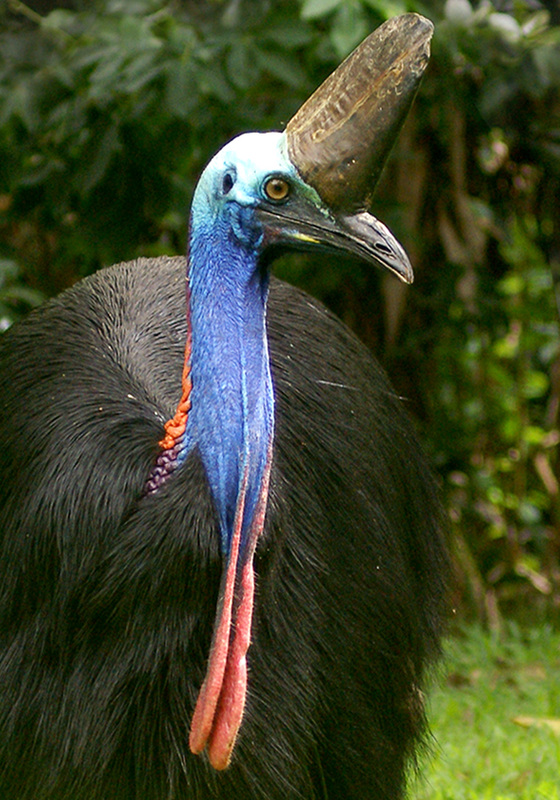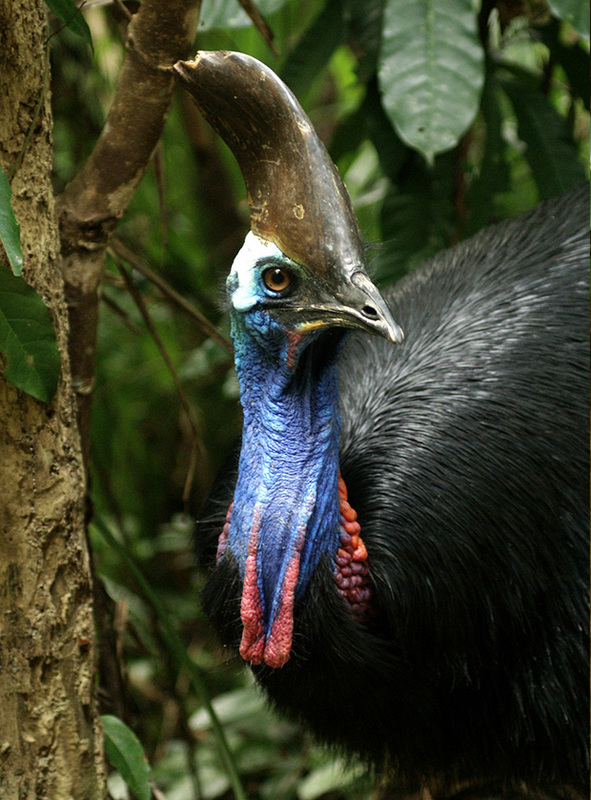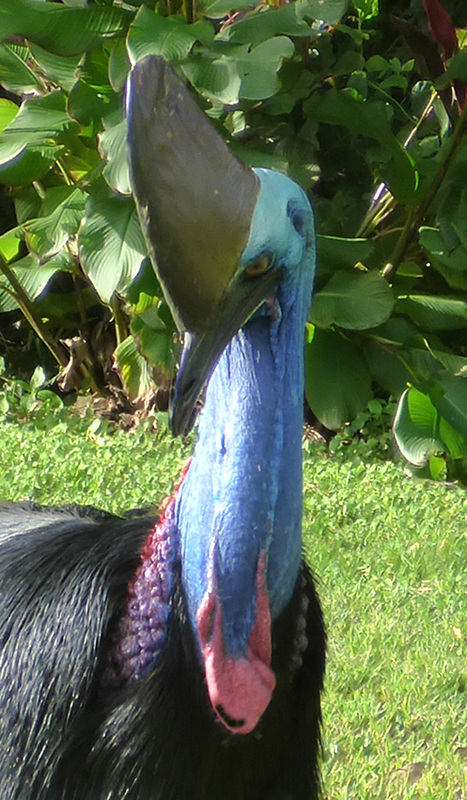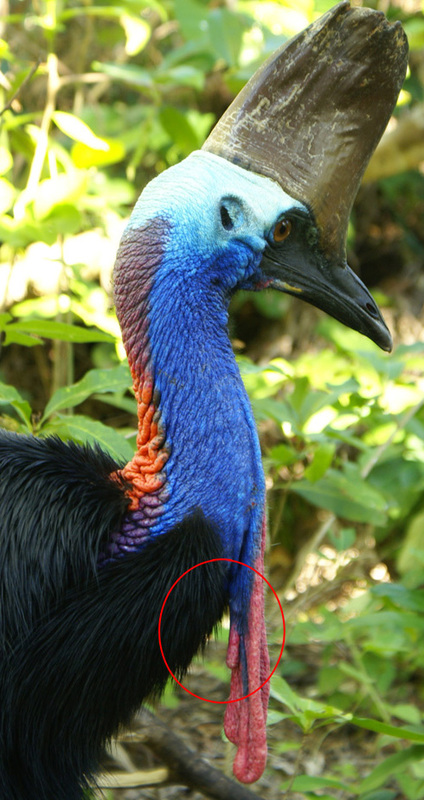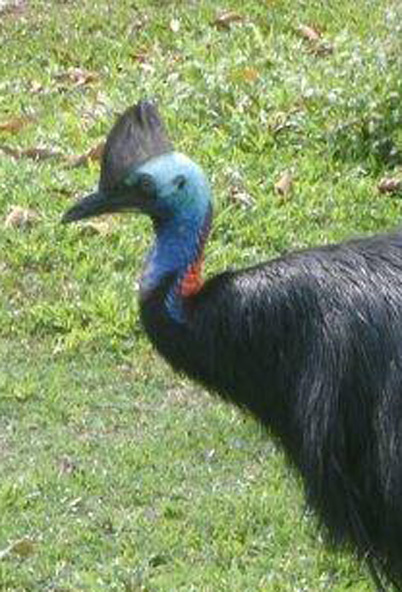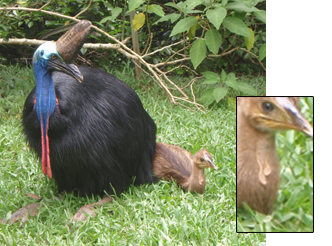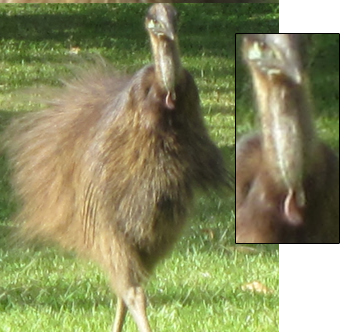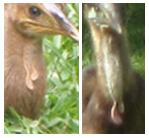The Community Cassowary Identification and Tracking project is about information sharing that can involve the whole community. The project is primarily targeted at recording the cassowary population at Mission Beach but we love to receive any stories of interest.
Your information is used to identify and track individual cassowaries. It gives us a better insight into their behaviour, movement in the landscape, how they interact with other birds , their mating habits, survival of chicks and dispersal of juveniles. The big day to day continual database is also able to show what birds cross which roads, what activities or obstacles may place them at risk such as fencing, dogs or interaction with people and can identify key lots for protection or buyback.
Your information is used to identify and track individual cassowaries. It gives us a better insight into their behaviour, movement in the landscape, how they interact with other birds , their mating habits, survival of chicks and dispersal of juveniles. The big day to day continual database is also able to show what birds cross which roads, what activities or obstacles may place them at risk such as fencing, dogs or interaction with people and can identify key lots for protection or buyback.
Life stages of a cassowary
|
Stripey
|
Juvenile
|
Sub Adult
|
Adult male
|
Adult female
|
How to identify a birdNew technology with smart phones and digital cameras is offering better opportunities to gather quality information. Cassowaries are as individual as people and as adults can be very easy to tell apart. The older they are, the easier it is. As cassowaries can live up to 50 years of age sometimes one distinguishing feature is all that is needed. We can identify birds from as young as a young juvenile if we have a clear photo.
Adults; The casque and wattles of a mature adult may be all that is needed for identification.
Casque and wattles
Juveniles and sub adults; It's more difficult to identify younger birds however some features can be seen even from a young chick such as distinctly shaped wattles like Bella's chick below. (Click to enlarge)
These features are helpful when following the dispersal of birds and can identify an adult from the juvenile stage. We were able to follow Cyrilina's progress to adulthood from a young juvenile by the shape of her left wattle. To establish a range at Bingil Bay/Garners Beach she displaced the resident matriarch 'Barbara' (pictured above).
Cyrilina from a chick to adult
|
|


